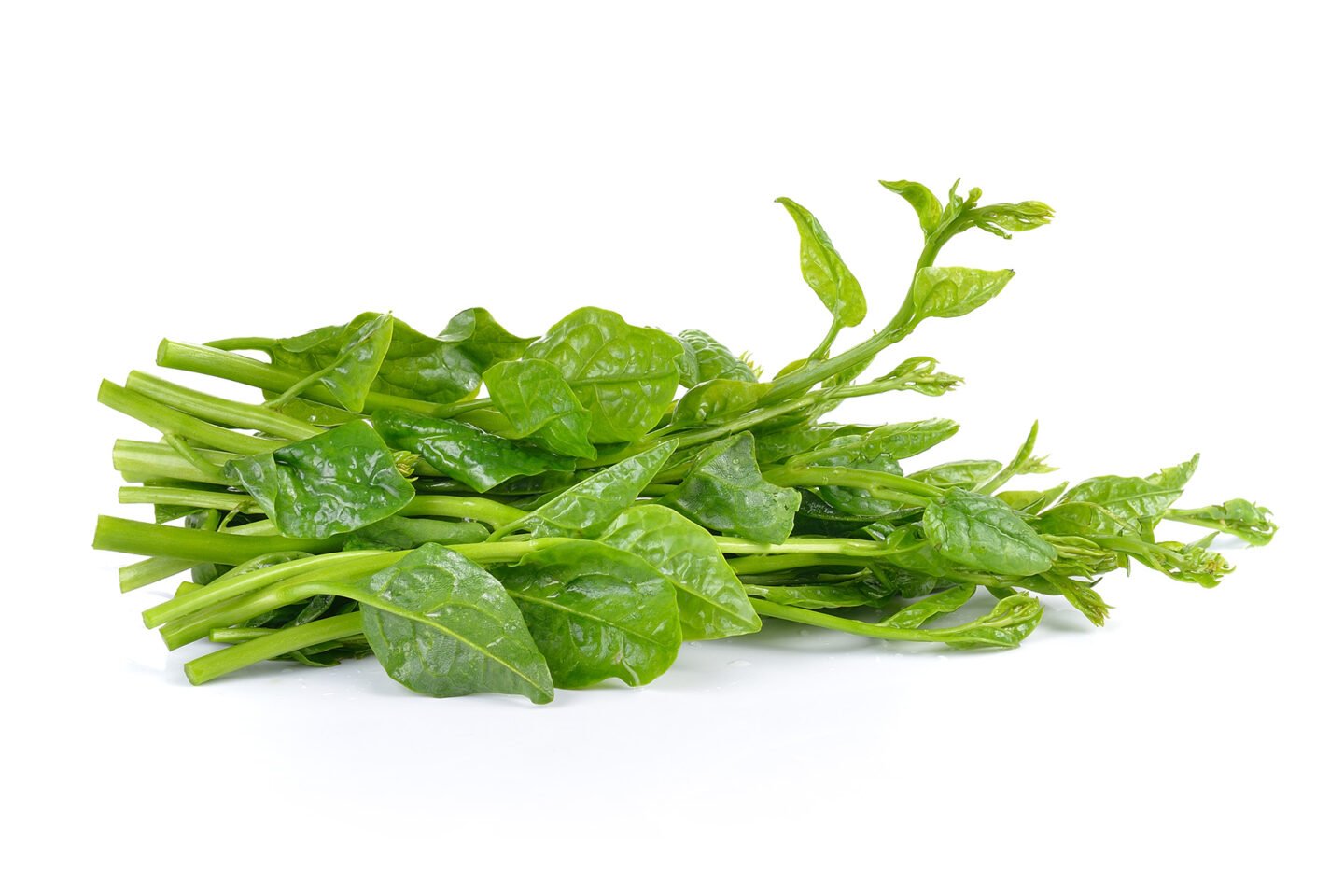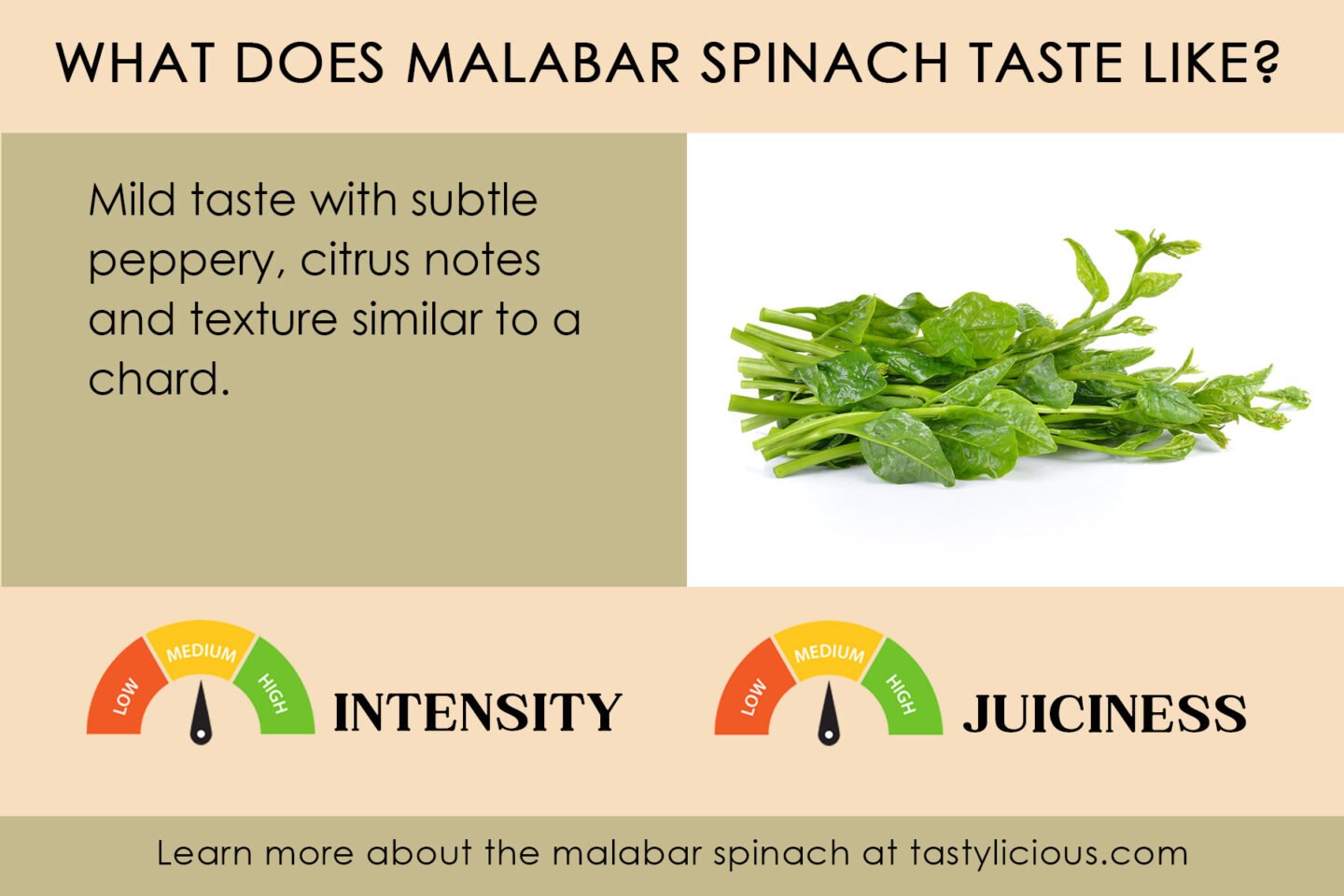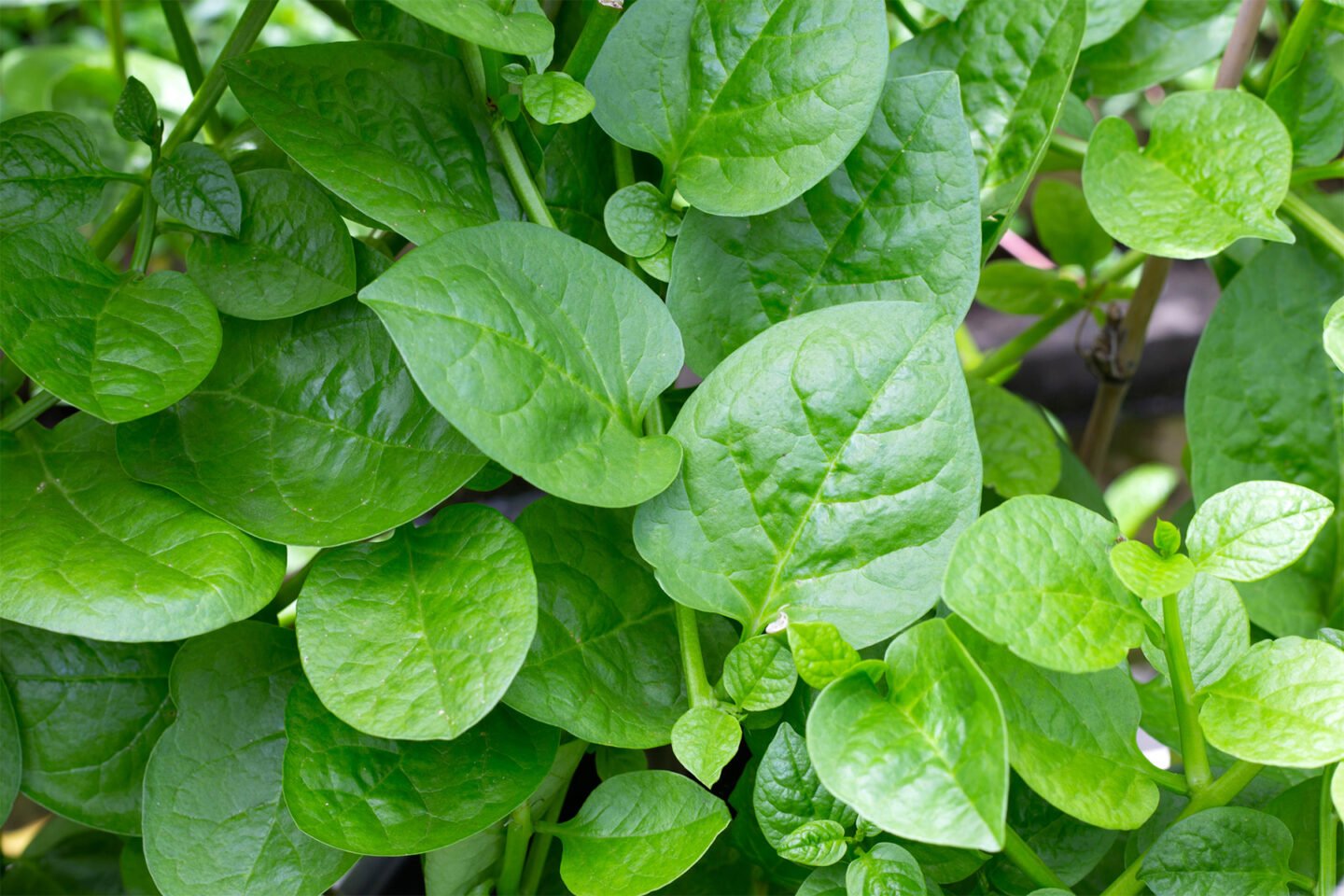Malabar spinach is a variety of summer salad that has little in common with regular spinach. Its heart-shaped, dark-green leaves thrive in the hot months rather than turning bitter like many spinach varieties.

Whether you’re looking to grow this vegetable or buy the leaves from a local store, you’ll want to know what Malabar spinach tastes like. Keep reading to discover what these leafy greens taste like and how to use them in the kitchen.
Table of Contents
What does Malabar spinach taste like?
Malabar spinach leaves have a mild taste with subtle peppery, citrus notes. Their texture is similar to chard, with a spongey, slightly stiff feel to them. They are juicy and tender when raw, but once cooked, the leaves look and taste a lot like regular spinach.
Malabar leaves are thicker than regular spinach, so they require a longer cooking time to wilt. This can be a benefit in stirfries and soups, where the leaves hold their shape better during cooking.
Both the stem and leaves contain mucilage, a lot like okra. The raw leaves may look slimy, but they’re fine once cooked. However, take care not to overcook them, as they can turn slimy.

Culinary Uses
Malabar spinach can be used in much the same way other leafy greens like mustard greens and watercress are used. The leaves can be eaten raw in salads and sandwiches or blended into smoothies.
Thanks to the mucilage-containing leaves, Malabar spinach works as an excellent thickening agent in casseroles and soups. Okra works similarly when used in gumbo.
Cooked Malabar greens will have more bulk than other regular cooked spinach as it has a more fleshy, thicker texture.
Sauté the leaves in olive oil with a sprinkling of seasoning for a nutritious side dish.
Stir-Fried Malabar Spinach Recipe
Malabar spinach is a tasty addition to any stirfry but this Chinese-style version is especially good.
Serves: 2
Ingredients
- ¼ cup water
- ½ tsp sugar
- ¼ cup cooking sake
- 1 Tbsp oyster sauce
- 7 oz (200g) skirt steak
- 15 stalks Malabar spinach
- 2 Tbsp peanut oil
- 2 cloves garlic, peeled and minced
- 1 cup mushrooms
- T Tbsp corn starch + 3 Tbsp water
Method
- Mix the water, sugar, sake, and oyster sauce in a small bowl and set aside.
- Cut the steak into small pieces and set aside.
- Remove the stalks from the Malabar spinach and slice them diagonally.
- Heat oil in a frying pan, and then add garlic for 1 minute before adding the meat. Once browned, add mushrooms and spinach stalks and sauté until cooked through.
- Add the Malabar leaves and cook until tender.
- Stir in the sauce, then move everything over to the side of the pan. Combine the corn flour and water until it forms a slurry, then add it to the pan. Mix until it thickens, then stir into the other ingredients in the pan.
- Serve with a splash of your favorite sauce.
Interesting sauce articles to improve your next stir-fry
Hoisin vs Oyster Sauce: The Main Differences
Tasty XO Sauce Substitutes That Work
Black Bean Sauce Alternatives for Your Next Stir-fry
How do ponzu and soy sauce differ?
Teriyaki vs Tonkatsu Sauce: Key Differences
Health Benefits
Malabar spinach is a nutrition-packed vegetable that’s high in vitamin A and C, protein, calcium, and iron. It is also high in potassium, magnesium, and phosphorus.
Malabar is also packed with antioxidants like lutein and beta carotene. The purple-colored leaves of the Rubra variety are a little higher in antioxidants than the Alba.
The mucilage found in the leaves and stems provides a good source of fiber.
Substitutes
If you’re looking to replace Malabar spinach in a recipe, then regular spinach is your best option. For stews, where the vegetable is used as a thickening agent, okra makes a useful substitute.

Fast Facts
- The botanical name for the Malabar spinach is Basella alba or Basella ruba depending on the plant’s variety. It is a member of the Basellaceae family and is not related to the spinach commonly found in supermarkets.
- Other common names for the Malabar spinach include creeping spinach, Indian spinach, Malabar nightshade, huang ti cai, red vine spinach, and Ceylon spinach.
- If the plant is too bitter, its flavor can be mellowed out by parboiling, similar to rapini.
- The rubra variety has purplish-red vines and pink flowers, while the alba variety has green vines and white flowers. Both varieties have a similar flavor once cooked.
- The vine can grow up to 10 feet in length and makes an excellent hedge if it's provided with a trellis for growing on.
- Malabar is a popular ingredient in Indian curries and Asian cuisine.
Summing Up
Malabar spinach has a mild taste with subtle peppery citrus flavor notes and a texture like chard. While regular spinach is likely to appeal to more people when eaten raw, Malabar spinach has its own benefits to offer in cooking. First, it holds its structure better in stir-fries. Second, its mucilage is handy for helping thicken dishes.
People who like to eat spinach are likely to enjoy Malabar greens. The plant grows well in warm weather, so if you enjoy gardening, then consider growing some. It's a great backup leafy green for when regular spinach turns bitter from the hot weather.
What is your favorite vegetable that’s not so widely known? Please let us know in the comments below.

Leave a Reply